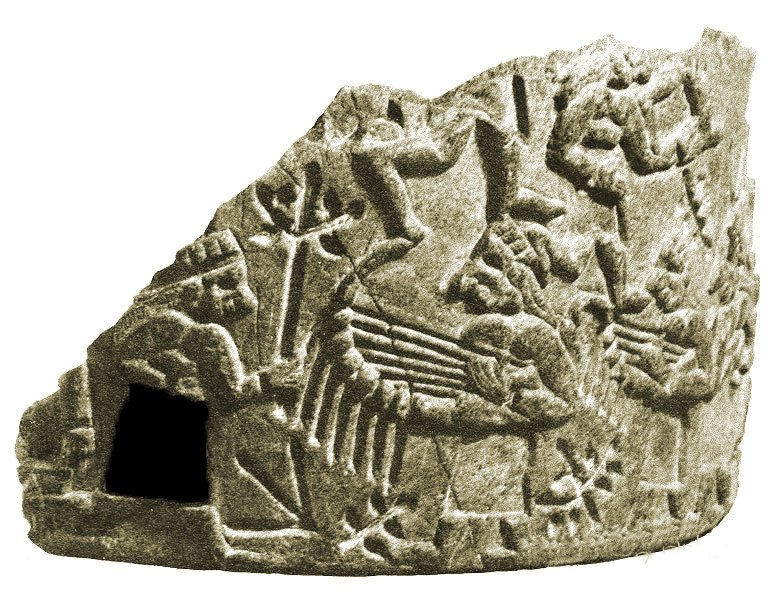Lugal-Anne-Mundu: ‘King Of The Universe’ And Powerful Leader Who Restored Sumer To Its Former Glory
A. Sutherland - AncientPages.com - Lugal-anne-mundu (Lugalannemundu) (ca. 25th century BC) was a powerful king and a great leader, who restored Sumer to its former glory.
His influence spread over a great number of territories from the Persian Gulf to the Mediterranean, neighboring the Taurus mountains in the north, and the Zagros mountains in the east.
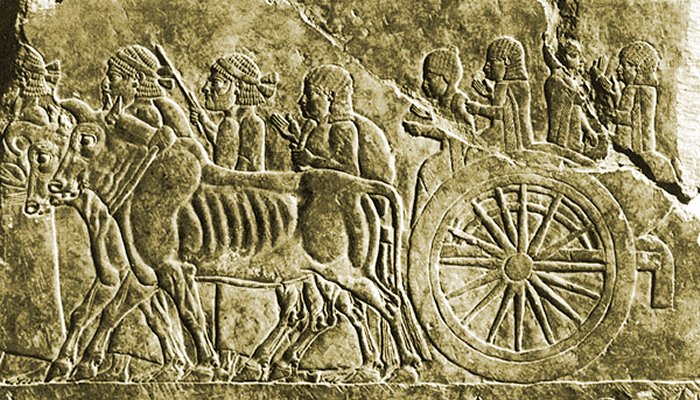
Excavations revealed the remains of buildings, walls, graves and a large number of inscribed clay, bronze and stone tablets, alabaster, onyx, porphyry and granite, vases in marble, some of which were inscribed, and others engraved and inlaid with ivory and precious stones.
According to the Sumerian King List, Lugal-anne-mundu ruled about 2400 BC and for the period of ninety years. He received the kingship following the fall of the Second Dynasty at Ur.
He was only one king ascribed to the Sumerian city-state Adab (modern Bismāyah) located south of Nippur, Iraq.
 Adab city was at the time, an important Sumerian center and at almost all other times in its history, ruled by kings who controlled all or most of Babylonia (southern Mesopotamia).
Adab city was at the time, an important Sumerian center and at almost all other times in its history, ruled by kings who controlled all or most of Babylonia (southern Mesopotamia).
The principal deity of the city was the goddess Ninhursag, known not only as the goddess of animal birth but the Mother of All Children, a mother-goddess figure.
There are few authentic contemporary inscriptions for Lugal-Anne-Mundu's reign; he is known mainly from a much later text, probably copied from one of his inscriptions, and unearthed during excavations 1903-04.
In this document, Lugal-anne-mundu - described as "King of the universe" or 'King of the four quarters of the Universe' - was an accomplished military leader and strategist.
He managed to capture vast territories and was able to make all foreign lands pay tribute to him and finally brought peace. Lugal-Anne-Mundu’s empire, which is believed to be the first in recorded history, collapsed upon his death.
A series of excavations conducted by the American archaeologist Edgar James Banks in 1903–04, exposed ancient ruins of Adab city dating from as early as the prehistoric period and as late as the reign of Ur-Nammu (reigned 2112–2095 BC).
The city of Adab was divided into two parts by a canal, on an island in which stood the temple, E-mach, with a ziggurat, or stepped tower. Archaeologists unearthed artifacts dated to Sargon of Akkad, ca. 2300 BC.
Further deep down, they found the remains of buildings, walls, graves and a large number of inscribed clay, bronze and stone tablets, alabaster, onyx, porphyry and granite, vases in marble, some of which were inscribed, and others engraved and inlaid with ivory and precious stones.
"...All were polished, some were engraved with a simple design; others were elaborately wrought with the figures of men and of animals... Others were inscribed with the name of the temple or of an unknown king...." wrote Edgar James Banks, who excavated the area of ancient Adab (now Bismaya or Bismya, Iraq).
Written by – A. Sutherland AncientPages.com Staff Writer
Copyright © AncientPages.com All rights reserved. This material may not be published, broadcast, rewritten or redistributed in whole or part without the express written permission of AncientPages.com
Expand for referencesOlmstead, A. T. "The Political Development of Early Babylonia." The American Journal of Semitic Languages and Literatures 33, no. 4 (1917): 283-321.
More From Ancient Pages
-
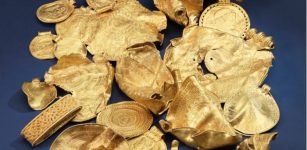 Vindelev Treasure – Surprising Evidence Of Nordic Connection With The European Iron Age Elite
Archaeology | Apr 9, 2024
Vindelev Treasure – Surprising Evidence Of Nordic Connection With The European Iron Age Elite
Archaeology | Apr 9, 2024 -
 Ancient Warming Event May Have Been Trigged By Changes In Earth’s Orbit
Archaeology | Dec 13, 2022
Ancient Warming Event May Have Been Trigged By Changes In Earth’s Orbit
Archaeology | Dec 13, 2022 -
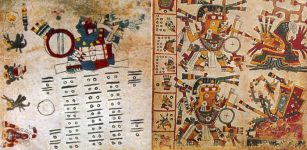 Ancient Codex Cospi: Intriguing Pre-Columbian Ritual Manuscript From Central Mexico
Featured Stories | Aug 10, 2017
Ancient Codex Cospi: Intriguing Pre-Columbian Ritual Manuscript From Central Mexico
Featured Stories | Aug 10, 2017 -
 Strange Tuxtla Statuette And Its Undeciphered Inscription – An Epi-Olmec Puzzle
Artifacts | Mar 14, 2018
Strange Tuxtla Statuette And Its Undeciphered Inscription – An Epi-Olmec Puzzle
Artifacts | Mar 14, 2018 -
 Our Lives Have Always Been Manipulated By Money – Part 2
Featured Stories | Jun 4, 2022
Our Lives Have Always Been Manipulated By Money – Part 2
Featured Stories | Jun 4, 2022 -
 Cartography Shows That The Isthmus Of Tehuantepec Was Used As An Inter-Oceanic Passage In The 16th Century
Archaeology | Oct 21, 2022
Cartography Shows That The Isthmus Of Tehuantepec Was Used As An Inter-Oceanic Passage In The 16th Century
Archaeology | Oct 21, 2022 -
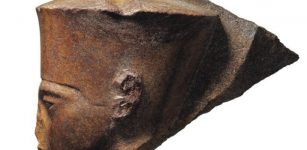 3,000-Year-Old Tutankhamun’s Head Sculpture Is Expected To Be Sold On Thursday In London
Archaeology | Jul 2, 2019
3,000-Year-Old Tutankhamun’s Head Sculpture Is Expected To Be Sold On Thursday In London
Archaeology | Jul 2, 2019 -
 Extremely Brutal Conflicts Among Maya Broke Out Before Civilization’s Decline
Archaeology | Aug 8, 2019
Extremely Brutal Conflicts Among Maya Broke Out Before Civilization’s Decline
Archaeology | Aug 8, 2019 -
 Controversial Story And Secret Knowledge Of Li Ching-Yuen Who Lived For 256 Years
Featured Stories | Sep 19, 2015
Controversial Story And Secret Knowledge Of Li Ching-Yuen Who Lived For 256 Years
Featured Stories | Sep 19, 2015 -
 Baba Yaga: Enigmatic, Powerful Archetypal Witch In Slavic Folklore
Slavic Mythology | May 16, 2016
Baba Yaga: Enigmatic, Powerful Archetypal Witch In Slavic Folklore
Slavic Mythology | May 16, 2016 -
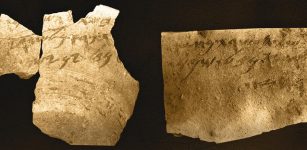 Two Scribes Penned 8th Century ‘Samaria Ostraca’ Inscriptions Unearthed In Samaria
Archaeology | Jan 23, 2020
Two Scribes Penned 8th Century ‘Samaria Ostraca’ Inscriptions Unearthed In Samaria
Archaeology | Jan 23, 2020 -
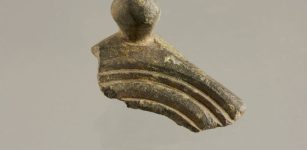 Piece Of Puzzling Roman Artifact Discovered In Belgium
Archaeology | Feb 16, 2023
Piece Of Puzzling Roman Artifact Discovered In Belgium
Archaeology | Feb 16, 2023 -
 Viking Fashion: Men And Women Were Vain And Very Clean During The Viking Age
Ancient History Facts | May 17, 2024
Viking Fashion: Men And Women Were Vain And Very Clean During The Viking Age
Ancient History Facts | May 17, 2024 -
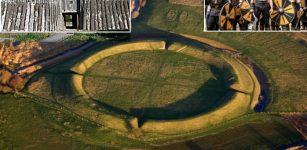 Great Viking Fortresses Built By King Harald Bluetooth
Featured Stories | Dec 12, 2022
Great Viking Fortresses Built By King Harald Bluetooth
Featured Stories | Dec 12, 2022 -
 Evidence Of Rare Roman-Celtic Temple Near Lancaster Castle
Archaeology | Mar 9, 2023
Evidence Of Rare Roman-Celtic Temple Near Lancaster Castle
Archaeology | Mar 9, 2023 -
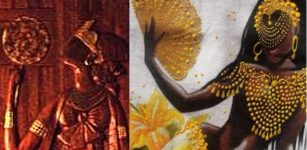 Oshun Goddess Of Yoruba People Who Brings All Things That Make Life Worth Living
African Mythology | Mar 29, 2019
Oshun Goddess Of Yoruba People Who Brings All Things That Make Life Worth Living
African Mythology | Mar 29, 2019 -
 Atomic Theory Was Invented 2,600 Years Ago By Acharya Kanad – A Genius Ahead Of His Time
Featured Stories | May 15, 2014
Atomic Theory Was Invented 2,600 Years Ago By Acharya Kanad – A Genius Ahead Of His Time
Featured Stories | May 15, 2014 -
 Dramatic Story Of Charlotte Corday And The Assassination Of Marat – Was She A Coldblooded Murderess Or Courageous Female Hero?
Featured Stories | Mar 11, 2025
Dramatic Story Of Charlotte Corday And The Assassination Of Marat – Was She A Coldblooded Murderess Or Courageous Female Hero?
Featured Stories | Mar 11, 2025 -
 Why Was Grette The Strong, Icelandic Poet And Warrior Afraid Of Darkness?
Featured Stories | Sep 30, 2023
Why Was Grette The Strong, Icelandic Poet And Warrior Afraid Of Darkness?
Featured Stories | Sep 30, 2023 -
 Pharaoh Hor Aha – 1st Dynasty Ruler Of Ancient Egypt Who Founded The City Of Memphis And May Have Been The Legendary Menes
Featured Stories | Jun 23, 2018
Pharaoh Hor Aha – 1st Dynasty Ruler Of Ancient Egypt Who Founded The City Of Memphis And May Have Been The Legendary Menes
Featured Stories | Jun 23, 2018

